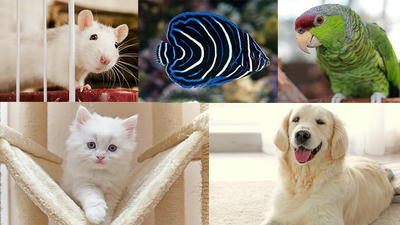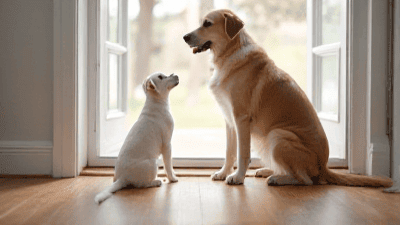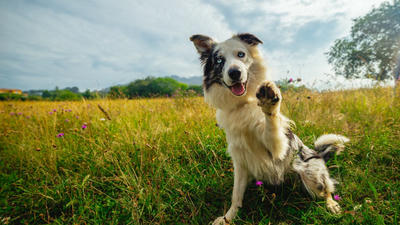
In today's fast-paced world, many people are looking for ways to incorporate pets into their lives without the added stress of high-maintenance hygiene. While all pets require care and attention, some are easier to manage in terms of cleanliness. For busy individuals or families, choosing a low hygiene pet can provide the joy of companionship without overwhelming demands.
Understanding Low Hygiene Pets
Low hygiene pets are those that typically require less grooming, have minimal odor, and generate less mess compared to high-maintenance animals. While no pet is completely maintenance-free, these options can simplify pet ownership, allowing you to enjoy the benefits of companionship without the added stress of extensive cleaning and grooming.
The Top 10 Low Hygiene Pets
Here are ten of the best low hygiene pets for those with busy lifestyles:
1. Fish
Overview: Fish are one of the most popular low-maintenance pets. They come in a variety of species, sizes, and colors, allowing you to choose a setup that fits your preferences.
Care Requirements:
- Tank Maintenance: Regular water changes and basic equipment maintenance are required, but fish do not need daily interaction.
- Feeding: Fish are typically fed once or twice daily, which can be accomplished quickly.
Why They Are Great: Fish provide a calming presence in your home and require very little grooming or handling.
2. Cats
Overview: Cats are known for their independent nature, making them ideal pets for busy individuals. They can entertain themselves and don't require regular walks.
Care Requirements:
- Litter Box: Regular maintenance of the litter box is necessary but generally straightforward.
- Grooming: Most cats self-groom, requiring minimal brushing. Long-haired breeds may need occasional grooming.
Why They Are Great: Cats are relatively low maintenance and can thrive in smaller living spaces. They provide companionship without demanding constant attention.
3. Guinea Pigs
Overview: Guinea pigs are social and friendly animals that can be kept indoors. They are easy to care for and can even develop strong bonds with their owners.
Care Requirements:
- Housing: A clean cage needs to be set up with bedding, food, and water.
- Feeding: Guinea pigs require fresh vegetables and hay but are relatively easy to care for.
Why They Are Great: They don’t require a lot of grooming and make delightful companions with their cheerful personalities.
4. Hamsters
Overview: Hamsters are small, low-maintenance pets that do not require much daily interaction. They are known for their playful behavior and are often kept in cages with minimal spaces.
Care Requirements:
- Cage Maintenance: Cleaning their cage weekly is typically sufficient.
- Feeding: Hamsters enjoy a mix of commercial pellets, fresh fruits, and vegetables.
Why They Are Great: Hamsters are entertaining to watch and relatively easy to care for, making them perfect for busy lifestyles.
5. Reptiles (e.g. Geckos, Snakes)
Overview: Reptiles like geckos and snakes can be fascinating low-hygiene pets. They have unique behaviors and require specialized care, but they typically don't need much daily interaction.
Care Requirements:
- Habitat Needs: Reptile tanks require specific heating and humidity levels but are generally low-maintenance.
- Feeding: Most reptiles eat insects or appropriate prey, and feeding can be done weekly or bi-weekly.
Why They Are Great: Reptiles do not require frequent handling and often remain in their habitat, reducing mess and odor.
6. Betta Fish
Overview: Betta fish are known for their vivid colors and flowing fins. They can thrive in smaller tanks and are hardy fish requiring minimal care.
Care Requirements:
- Tank Setup: A small tank with proper filtration and heating will suffice.
- Feeding: Bettas are typically fed a few pellets daily, which is quick and easy.
Why They Are Great: Betta fish are visually stunning and require less maintenance than larger fish setups, making them a popular choice.

7. Turtles
Overview: Turtles are unique pets that can live for many years. They have specific habitat needs, but their generally low hygiene factor makes them manageable for busy owners.
Care Requirements:
- Tank Maintenance: Regular cleaning of the tank and water is necessary, but turtles do not require much handling.
- Feeding: Depending on the species, they typically eat commercial turtle pellets and some vegetables.
Why They Are Great: Turtles are low-maintenance and captivating to observe, adding character to your living space.
8. Quotes
Overview: Quail are small birds that can be raised indoors or outdoors, making them low-maintenance pets that provide both eggs and companionship.
Care Requirements:
- Housing Needs: A clean cage with bedding is required.
- Feeding: Quail eat a mix of commercial bird food and grains, which can be purchased easily.
Why They Are Great: Quail require minimal grooming, and their relatively small size makes them suitable for smaller living spaces.
9. Mice
Overview: Mice are small creatures that can be entertaining as pets. They are relatively low-maintenance and can even work well in pairs or small groups.
Care Requirements:
- Cage Maintenance: Regular cleaning of their living space is necessary.
- Feeding: Mice require a simple diet of commercial rodent food, grains, and occasional treats.
Why They Are Great: Mice are curious and social animals, easy to care for, and can be entertaining to watch as they play.
10. Small Birds (e.g. Budgies, Canaries)
Overview: Small birds, such as budgies and canaries, can be delightful companions. They require minimal grooming and can often thrive in smaller cages, making them suitable for busy pet owners.
Care Requirements:
- Cage Setup: Keep their cage clean and stocked with food and fresh water.
- Feeding: A diet of seeds and fresh fruits/vegetables will suffice.
Why They Are Great: Many small birds are known for their cheerful songs and social behavior, providing a lively presence in your home.
Tips for Choosing the Right Low Hygiene Pet
When selecting a low hygiene pet for your busy lifestyle, consider the following tips:
1. Assess Your Living Space
Determine whether you have enough space for the pet you are considering. Make sure that your home can accommodate their specific habitat requirements.
2. Research Care Needs
Understand the specific care requirements, including feeding, habitat maintenance, and social needs. Choose a pet whose needs align with your availability and lifestyle.
3. Evaluate Time Commitment
Consider how much time you can realistically dedicate to your pet. While these low hygiene pets require less maintenance, they still need care and attention.
4. Consider Your Family Dynamic
Think about the dynamics of your household. Some pets, like guinea pigs and birds, thrive on social interaction, while others, like reptiles and fish, may not require much interaction.
5. Plan for Long-Term Care
Be mindful that any pet represents a long-term commitment. Investigate their lifespan and understand the responsibility involved in caring for them throughout their lives.
Conclusion
Finding a pet that fits into a busy lifestyle does not mean sacrificing companionship or joy. Low hygiene pets can provide the love and happiness you desire without overwhelming demands. From fish and small mammals to reptiles and birds, there is a perfect pet for everyone. By considering your lifestyle, space, and care capabilities, you can choose a low hygiene pet that will bring joy to your home for years to come.



